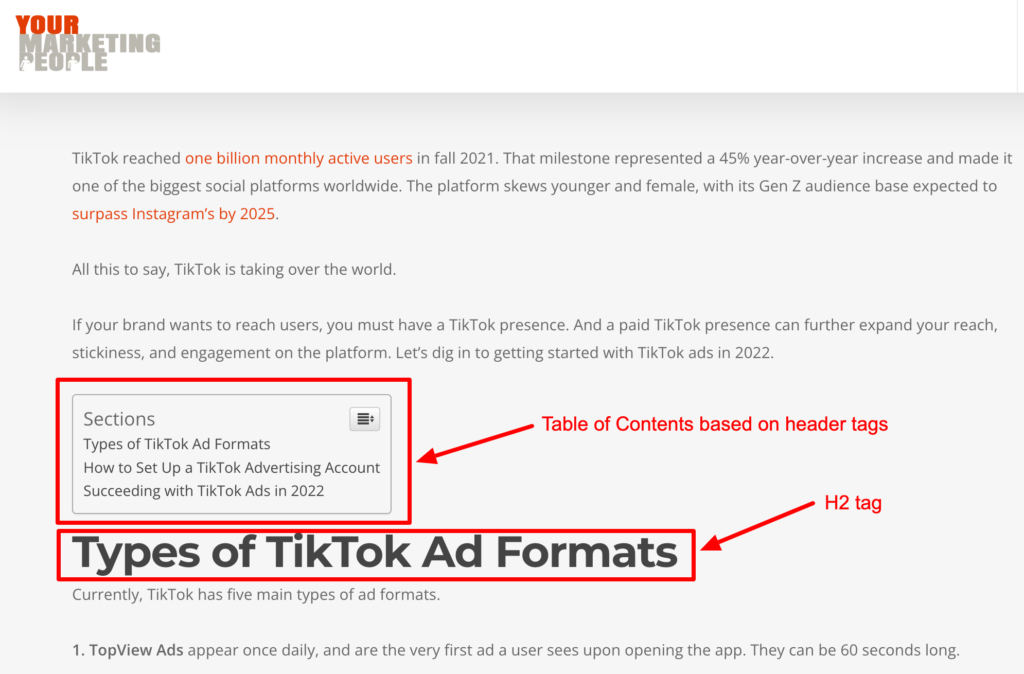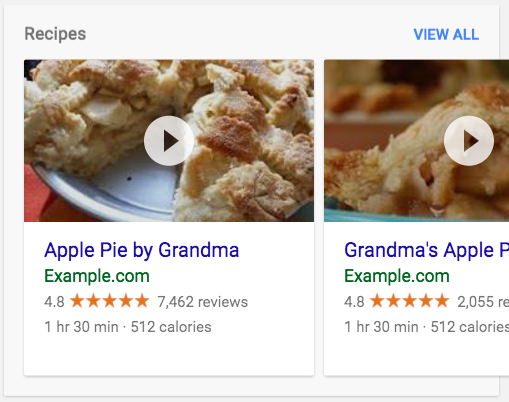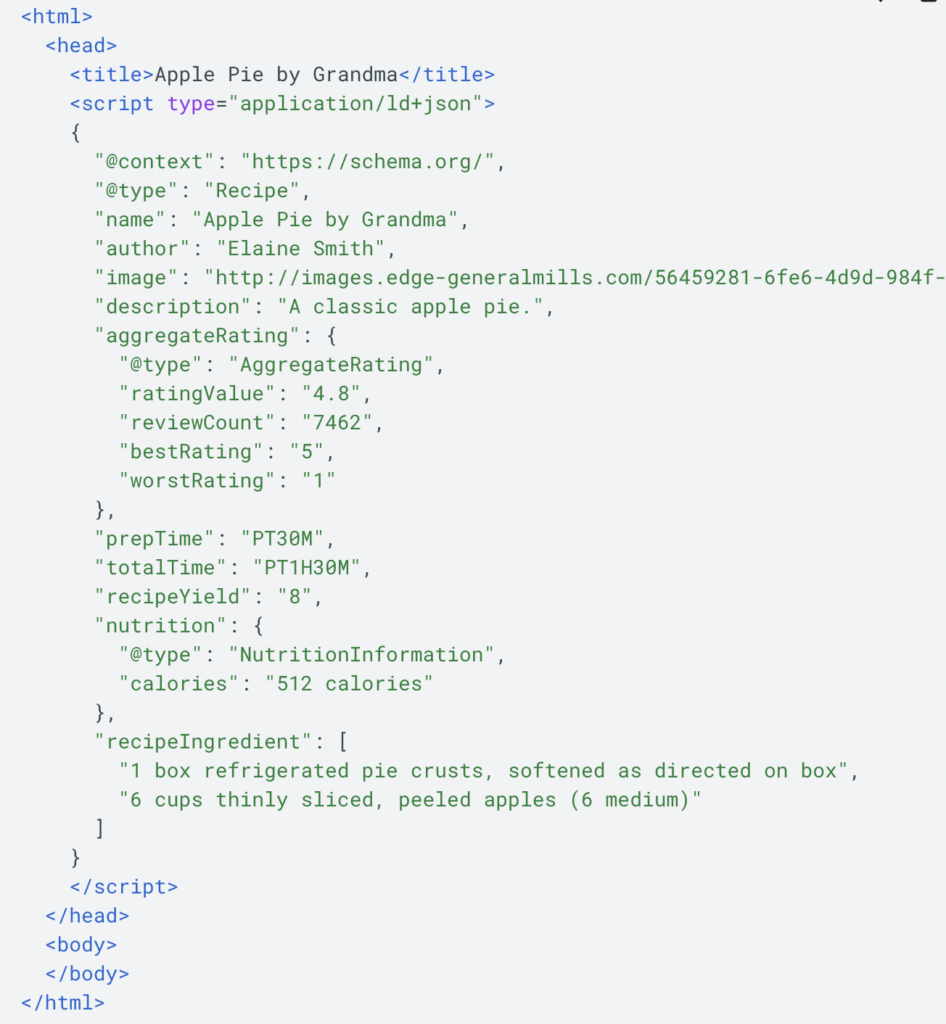HTML matters. It’s what makes your web page a web page, after all.
But some HTML tags also matter for SEO. Today, we take a look at seven of them.
Sections
1. Title tag
The title tag is the title of the page that shows up in your browser window, as well as in the Google search results. Here’s an example from one of our recent blog posts on TikTok advertising.
In the search results:

In the browser window:

In the html, the title tag looks like this:
<title>TikTok Ads in 2022: Getting Started Guide</title>
Title tags matter for SEO, according to Google, so make sure you put effort into crafting one that makes people want to click. Aim for one that is 50 to 60 characters long and includes your priority keyword.
2. Meta description
Your meta description is what shows up beneath the title tag in the Google search results. Together, you can think of these as your site’s billboard in Google. Plus, if your keywords match the user’s search query, as they do in the example above, they appear bolded in the meta description.
In the html, the meta description looks like this:
<meta name=”description” content=”TikTok is one of the biggest social media platforms in the world. Follow this guide to learn about creating TikTok ads.” />
Take some time to write a compelling meta description — but be aware that Google rewrites these about two-thirds of the time, pulling other content from the page to better match the user’s search query.
3. Header tags
Header tags enable you to format the headings in your content. The header for this section “3. Header tags” is a h2 tag that appears as <h2>3. Header tags</h2> in the html.
Header tags go from h1 to h6, allowing you to have six levels of headings. Like a table of contents for a book, header tags help Google, and your readers, get a quick glimpse at what your content is all about.

4. Image alt text
Image alt text is the HTML makeup that describes what is in an image. Screen readers scan image alt text so visually impaired people can understand what’s in an image on the page. Google search crawlers scan it for the same reason.
Image alt tags are a great opportunity to not only make your website more accessible, but to help Google glean more context about your page. If it is relevant to the image, this is a great spot to include a keyword, too.
In the html, the image alt text for the image below looks like this:
alt=”tiktok in feed ads”

Pro Tip: Add image alt text to all of the main images on a page. Icons do not need alt text. Learn more about optimizing your images for SEO.
5. Robots meta tag
The robots meta tag gives Google instructions for how they should treat a webpage, such as whether it should be indexed in the Google search results (or not), and whether the links on the page should or should not be followed.
We want Google to index this blog post and follow the links within it, so our meta robots tag would look like this in the html:
<meta name=”robots” content=”index, follow” />
6. Canonical tag
Do you have multiple versions of a particular page, such as multiple variations of a landing page, but you only want one to rank in the search results? That’s the perfect use case for a canonical tag.
Canonical tags help Google understand which version of a page is the canonical, or main, version you want to rank. SEO best practice is to add a canonical tag to both the page you want to rank, which would be a self-referencing canonical tag, as well as on the secondary version, which references the canonical version.
Here’s what a canonical tag looks like in the html:
<link rel=”canonical” href=”https://www.yourwebsite.com/exampleurl” />
7. Schema markup
Schema markup, also known as structured data markup, uses HTML to display specialized search results that can increase your visibility in the SERPs and drive more clicks. For example, schema markup is what powers those special recipes boxes you see when you look up a chocolate chip cookie recipe
Here is what schema looks like in Google:

And here is what the HTML looks like:

You can use schema markup for a number of things on your website, including:
- Blog articles
- Datasets
- Events
- Educational courses
- FAQ
- How-to content
- Job postings
- Local business information
- Podcasts
- Products
- Reviews
- Q&A
- Recipes
- Videos
- Website search
Is your website properly using these HTML tags to benefit your SEO? Find out with a SEO audit from Your Marketing People.







